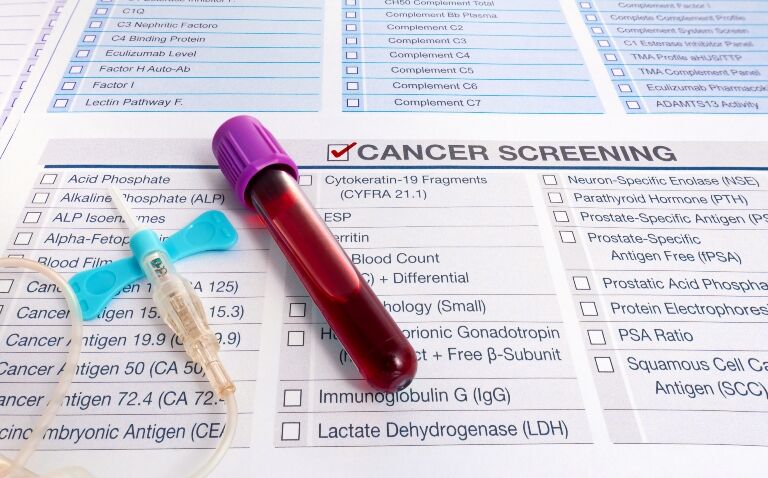A biomarker-based strategy is comparable to a magnetic resonance imaging (MRI)-enhanced approach for prostate cancer screening but results in more biopsies and increased detection of less aggressive cancers, a randomised trial has found.
Prostate cancer guidelines often recommended obtaining an MRI before a biopsy, yet MRI access was limited and using blood-based biomarkers with systematic biopsies could provide an alternative approach, Swedish researchers wrote in the journal JAMA Network Open.
In the open-label randomised trial, 12,743 men aged 50 to 74 with no previous cancer diagnosis underwent blood sampling for prostate specific antigen (PSA) levels and Stockholm3 tests to estimate their risk of clinically significant prostate cancer.
After the blood tests, men were randomly assigned in a 2:3 ratio to receive a Stockholm3 test with systematic biopsy (biomarker group) or a PSA test followed by MRI with systematic and targeted biopsy (MRI-enhanced group).
The Stockholm3 test, combines patient age, previous prostate biopsy results, family history of prostate cancer, single-nucleotide variations and levels of total PSA, free PSA, human kallikrein 2, β-microseminoprotein and growth differentiation factor 15 to estimate the risk of clinically significant cancer (Gleason score ≥ 3 + 4).
In the biomarker group (5,134 men), 8.0% of participants (413) had a Stockholm3 risk score of 0.15 or higher and underwent systematic biopsies, researchers said.
In the MRI-enhanced group (7,609 men), 12.2% participants (929) had a PSA level of 3ng/mL or higher and were referred for an MRI with biopsies if they had a Prostate Imaging-Reporting and Data System (PI-RADS) score of 3 or higher.
Detection rates of clinically significant prostate cancer were comparable between the two groups: 2.3% in the biomarker group and 2.5% in the MRI-enhanced group.
However, researchers reported more biopsies were performed in the biomarker group than in the MRI-enhanced group (326 of 5,134 [6.3%] vs 338 of 7,609 [4.4%]).
There were also more indolent cancers detected in the biomarker group (61 [1.2%] vs 41 [0.5%]).
Senior author Professor Anna Lantz, associate professor in urology at Karolinska Institute and consultant urologist at Karolinska University Hospital Solna in Stockholm, Sweden, noted that certain areas and healthcare systems lacked the capacity to implement the diagnostic chain required for MRI-based screening and the cost of MRI of the prostate varied by setting.
Given their findings, they concluded the Stockholm3 test could be a feasible alternative in regions with limited access to MRI.
‘Nevertheless, the biomarker-based approach comes at the expense of more biopsy procedures and increased detection of less aggressive cancers,’ Professor Lantz and colleagues said.
Strengths of the study included its randomised design, large-size and population-based screening setting.
Regarding limitations, the authors noted that optimal PSA cut-off values for triggering a Stockholm3 test and guiding biopsy decisions were undetermined.
‘Finally, we focused on detecting clinically significant prostate cancer, and long-term prostate cancer mortality implications remain uncertain,’ they wrote.
Last month, a Cancer Research UK study found fewer middle-aged people are dying of cancer in the UK than at any point over the last 25 years, despite a rise in cases of cancer, partly due to improvements in screening programmes.
Another recent artificial intelligence-based study found that prostate tumours evolve in two distinct disease types, which may lead to better diagnosis and tailored treatments in future.










